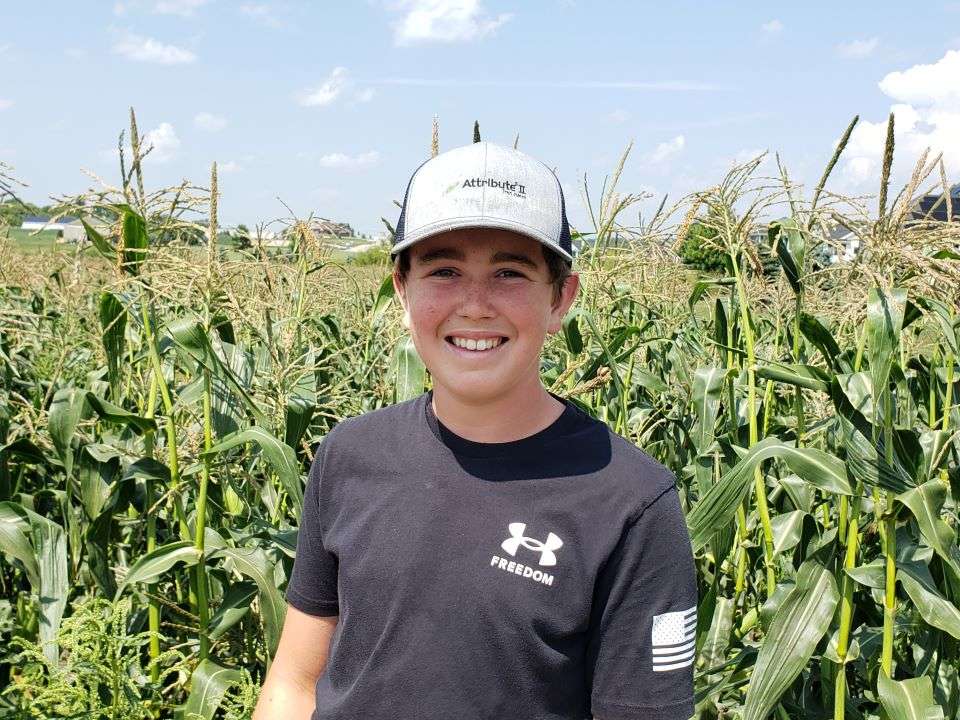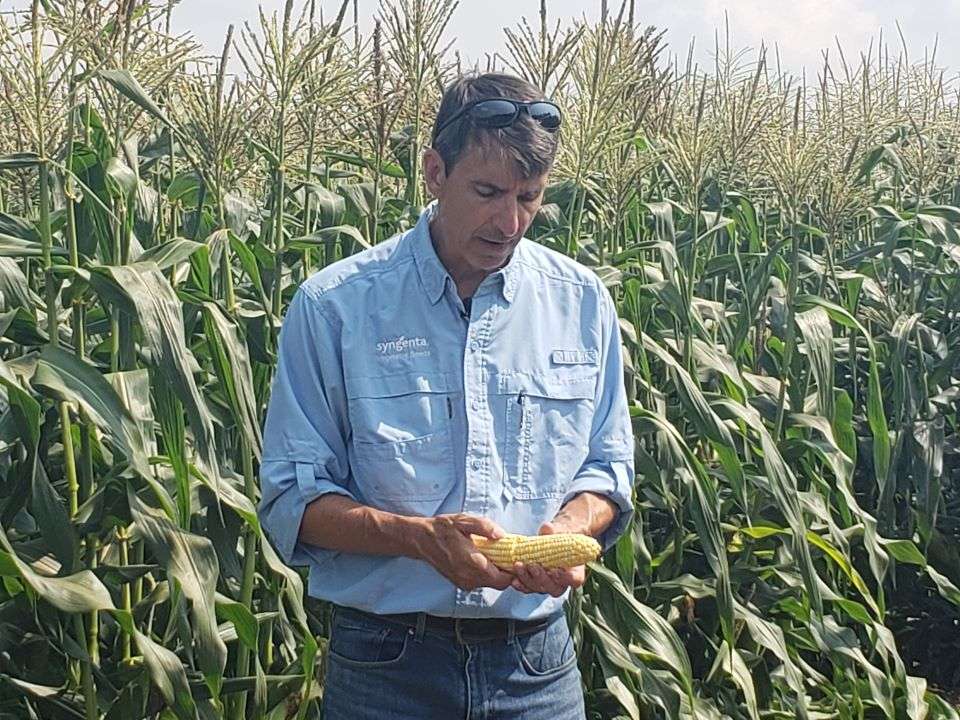Last week, you first met remarkable 12-year-old farmer Weston Hannan, who planted his first corn patch when he was 6. Remember Weston was not from a farm family. But he had a true passion for farming from the first time he started following neighbors’ tractors on his bicycle when he was 4.
You also met 95-year-old Wisconsin farmer Bob Heath. Bob, like Weston, did not come from a farming background. Bob started farming at 45 simply because he wanted to work outdoors.
Other than being farmers what do they have in common? They’re both clients of Syngenta Global, a major international seed grower and supplier.



What exactly is Syngenta? Syngenta is a global company with its main headquarters in Switzerland. Their research facilities span the globe – Belgium, Germany, China, Netherlands, Belgium, California, India and the United States. Their goal is to help farmers combat climate change and improve crops making farming more efficient. With the growing population, climate change and less land efficiency becomes the keyword.
It’s not something you think about, but where do farmers get the seeds to grow their crops? Some grow their own, for sure, but that’s a cumbersome process. Most come from companies that specialize in providing seeds. Meaning they have farmers that produce crops just for seed harvest. And they have scientists — agronomists — who specialize in developing those seeds that produce varieties of crops that no other companies have. With sweet corn alone, there are dozens of varieties being planted around the globe, including ones you may have heard of like Silver Queen or Jubilee. They’re all corn once they hit your plate — but they’re all slightly different for the farmers who grow them.
Where The Food Comes From visited Plainfield, WI on August 9 to get better insight into Syngenta’s Research and Development facility, which specializes in developing new varieties of corn and green beans. No surprise, the primary topic of conversation was about one of our favorite vegetables – corn. In this case the Triple Sweet introduced in Part 1 of this episode.

Chip’s first interview took place with Syngenta’s Sweet Corn Portfolio Manager Glenn McKay. Glenn is in charge of supplying and managing Syngenta seed distribution to farmers in all of the Americas, Australia and New Zealand. In other words, he manages “the market” which sounds like no easy task.
How about a fun fact? Corn is one of the oldest crops grown. Its origins began in Central Mexico about 8,000-9,000 years ago. Even back then, breeding the perfect ear of corn was a thing. Early corn varieties just had one or two kernels per stalk! Through seed selection, about 6,000 years ago a corn cob surrounded by kernels appeared. Sound familiar?
Glenn explained different corn has different uses. Truly something I have never thought about. In addition to the sweet corn we all love, you have feed corn, corn for processing, industrial uses, and biofuels. Depending on how the corn is going to be used also determines how the cornstalk is grown. More from Glenn in a minute.
Time to talk to Syngenta’s Senior Breeding Trial specialist Doug Plaisted. Doug’s agronomy knowledge is impressive and the things he talked about were enough to make your head spin.


Chip’s interview with Doug took place on the leg of a rainbird, which is the irrigation system used to water the fields. Doug told us, “The rainbird is my lab.” Pretty nice place to go to work every day, unless of course there are gnats. Just ask Chip about that (he’s a magnet — they love his ears).
Doug spoke about some of the technology that goes into creating the perfect ear of corn. Scientific stuff like genomes and gene pairs and DNA technology. As Doug was talking about DNA technology all I could picture in my mind’s eye was the DNA Double Helix Model (photo above right). Totally confusing, but totally fascinating. Is your head spinning yet?
Per Doug, one of the challenges is growing “something the consumers love and something the growers love. You got to take care of everybody.” Pretty hefty goal. Meeting someone like Doug is so fascinating. I wish I could get into his head to see how his mind works. Or maybe not, it may make my head spin too much.

I forgot to mention one very important detail. It was Doug who developed the Triple Sweet variety of corn.

By now you know many conversations took place between Glenn and Weston. But one conversation really hit home. Please, if you’re under 18, don’t get insulted by my next statement — I’m just trying to make a point. So many of today’s young people have no inkling about what the future holds for them. Never mind thinking of becoming a farmer. Per Glenn, “The world needs more farmers,” and other folks that are not from farm families need to get involved.
I guess Bob Heath had the same foresight Weston has now over 50-years-ago.
Off to look at the Triple Sweet cornfield up close and personal. If you look closely there is only one big ear of corn per stalk. That’s a really good indicator this kind of corn is for eating right from a pot of steaming water or off the grill. Glenn described the qualities of a good ear of corn and the Triple Sweet hits all the benchmarks. It has to have the right flavor, texture, and sweetness — as Glenn describes it, the perfect “trifecta for the consumer.”


The day ended with Glenn talking about Syngenta and the great things they are doing when it comes to the needs of the farmers. All truly important stuff and you will hear it all in the episode.
Okay folks humor me. Here is my just because picture. The day was hot and everyone was really exhausted. So, it was just time to sit in the shade and chill. I am not in it, but my notepad is. Where was I? Off getting an(other) ear of Syngenta’s Triple Sweet Corn.
A perfect end to a perfect day.

Ivy Perez, Glenn McKay, Doug Plaisted and Chip Carter

